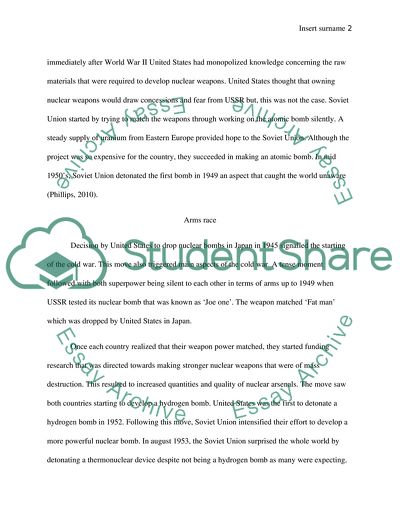Cite this document
(Cold War- Arms Race between US and USSR which Lead to the Fall of USSR Essay Example | Topics and Well Written Essays - 2000 words, n.d.)
Cold War- Arms Race between US and USSR which Lead to the Fall of USSR Essay Example | Topics and Well Written Essays - 2000 words. https://studentshare.org/history/1781120-cold-war-arms-race-between-us-and-ussr-which-lead-to-the-fall-of-ussr
Cold War- Arms Race between US and USSR which Lead to the Fall of USSR Essay Example | Topics and Well Written Essays - 2000 words. https://studentshare.org/history/1781120-cold-war-arms-race-between-us-and-ussr-which-lead-to-the-fall-of-ussr
(Cold War- Arms Race Between US and USSR Which Lead to the Fall of USSR Essay Example | Topics and Well Written Essays - 2000 Words)
Cold War- Arms Race Between US and USSR Which Lead to the Fall of USSR Essay Example | Topics and Well Written Essays - 2000 Words. https://studentshare.org/history/1781120-cold-war-arms-race-between-us-and-ussr-which-lead-to-the-fall-of-ussr.
Cold War- Arms Race Between US and USSR Which Lead to the Fall of USSR Essay Example | Topics and Well Written Essays - 2000 Words. https://studentshare.org/history/1781120-cold-war-arms-race-between-us-and-ussr-which-lead-to-the-fall-of-ussr.
“Cold War- Arms Race Between US and USSR Which Lead to the Fall of USSR Essay Example | Topics and Well Written Essays - 2000 Words”. https://studentshare.org/history/1781120-cold-war-arms-race-between-us-and-ussr-which-lead-to-the-fall-of-ussr.


